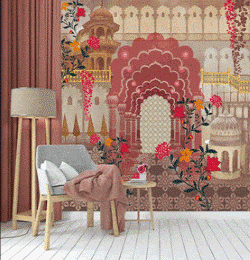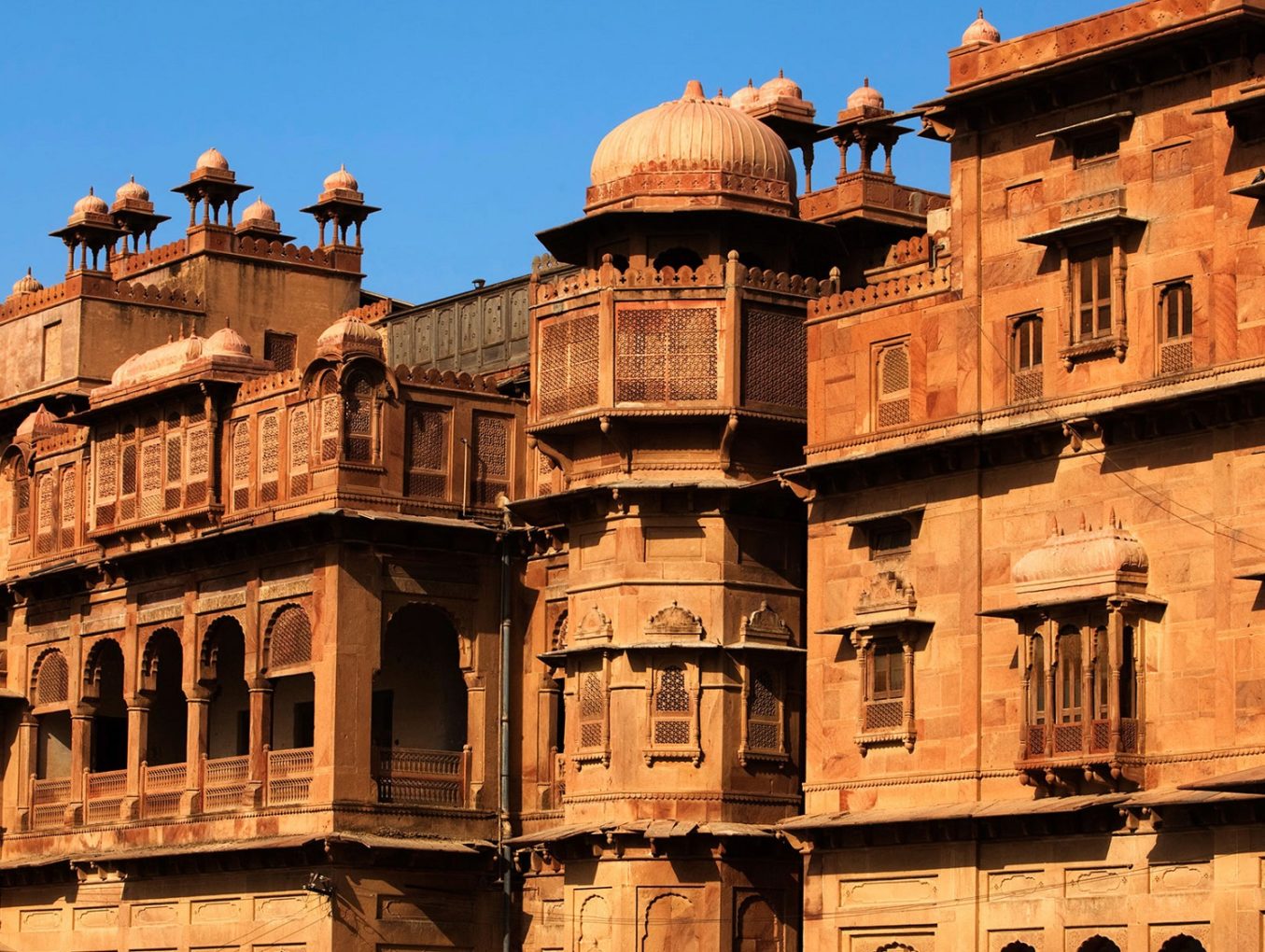Grand Havelis, stunning forts and luxurious palaces have significantly been a part of Rajasthan’s structural design. A mixture of Hindu and Mughal architecture, the Rajputs have definitely been creative builders. We’ve put together eight palaces which showcase this creativity and the rich heritage of Mughal architecture.
Amber Fort, Jaipur: Also called as Amer Fort and Amer Palace, the palace is located on a hill and overlooks Maota Lake, the main source of water for the fort. Made of red sandstone and marble, this palace is laid out into four levels, each with a courtyard.

The architectural style of the fort is a blend of Mughal and Rajput architecture. One of the best examples of this style within the fort is the Ganesh Pol. The gate is embroidered with mosaics, which makes it look colourful and grand.
On the other hand, the Sheesh Mahal (palace of mirrors) has walls inlaid with exquisite mirrors, while the Jai Mandir has a perfect blend of both styles of architecture with carved jali screens and stucco work.

Hawa Mahal, Jaipur: Located in the heart of the city, the Palace of Winds is one of the famous palaces in Jaipur. The palace has a five-storey exterior and the windows are decorated with intricate lattice work which was meant for the royal ladies to observe the daily life of the commoners.
The architecture uses the ‘Jharokhas’ – a suspended or overhanging enfolding balcony. The monument is a classic example of how Jharokhas were used in those days. Apart from the Hawa Mahal, Jharokhas are also found in temples, havelis and palaces situated in Rajasthan.

City Palace, Jaipur: Infused with the Mughal, European and Rajput styles of architecture, the palace complex in Jaipur consists of the Chandra Mahal, Mubarak Mahal, Mukut Mahal, Maharani’s Palace, Shri Govind Dev Temple, the City Palace Museum and other buildings. The City Palace has magnificent pillars, lattice or jali work, carved marble interiors and inlaid ornamentations which make the palace a beautiful treat to the visitors😍.

Junagarh Fort, Bikaner: The architecture reflects one of the oldest Rajput styles of the 16th century under the impact of Gujarati and Mughal architectural designs. The Mughal decorations reflect in the stucco, wall paintings and stone inlay works. The mosaic stone carving and the lattice works reflect the Gujarati impact.

Jaisalmer Fort or Sonar Quilla, Jaisalmer: The magnificent complex consists of gleaming golden sandstone walls and buildings, elaborately designed havelis and palaces among numerous temples, bazaars and residences inside the walls of the complex. The architecture within the fort was protected by double fortification walls and circular bastions, a key physical component used for defence and battle.

Mehrangarh Fort, Jodhpur: Built over a period of 500 years, the building styles of varied periods are represented, including the 20th century. The fort wall has seven entrances and many palaces within, all connected with courtyards. The structures with their Bengaldar roofs have a strong influence of Islamic architecture. Of course, Islamic palaces stand independently whereas all the buildings here stand in one continuous row.

Umaid Bhawan Palace, Jodhpur: Considered as one of the world’s largest private residences, the Umaid Bhawan Palace boasts an amalgam of lndo-Saracenic, Classical Revival and Western Art Deco architectural styles.

Lake Palace, Udaipur: Spread across its natural foundation of four acres, the Lake Palace is situated amidst the scenic Lake Pichola. The palace has a series of courtyards aligned with numerous columns, terraces, fountains and well laid gardens.
It also comprises of exotic rooms with carved arches, paintings, crystal work and inland stones of pink and green lotus leaves. The palace is currently run by the Taj Group of Hotels.



FAQs About Rajasthan
Why is Rajasthan The King Of Mughal Architecture?
The architecture of the palaces in Rajasthan is a very ethnic mix of Mughal and Rajputs architecture. Some of the palaces like Lalgarh palace Bikaner, city palace Jaipur etc. were built with extensive fortifications to protect against enemy attacks.
Why is Mughal Architecture rich?
The rich Mughal architecture is the perfect mixture of Persian, Turkish, Islamic and Indian architecture; this mixture has created wonders and never fails to amaze the visitors.
What inspired Mughal architecture?
Mughal architecture was influenced by many cultures due to the tastes and interests of the different rulers of the Mughal Empire, all through their reign. It all started up with Babur who brought two Persian artists to India after defeating the last Afghan King Ibrahim Lodhi.

